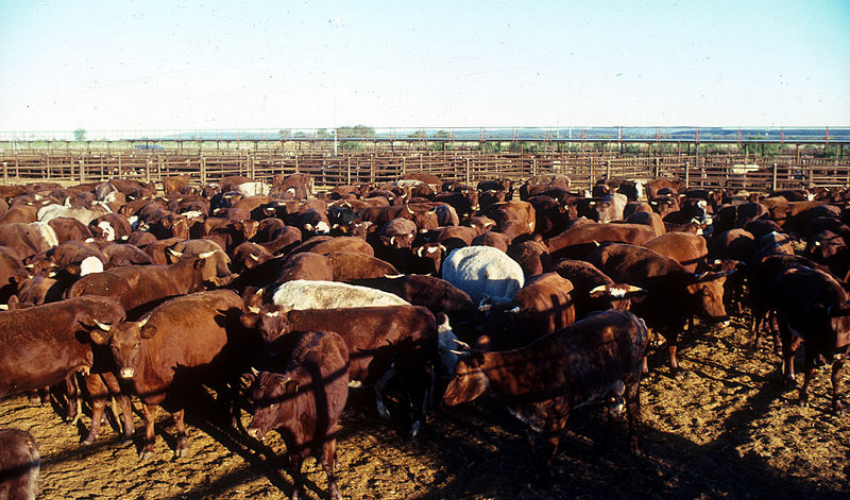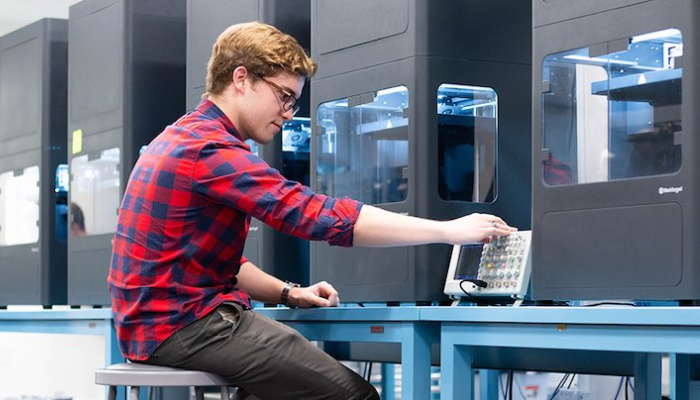Australia’s Meat Processing Industry is Turning Towards 3D Printing For Part Replacement

The Australian Meat Processor Corporation (AMPC) has partnered with Markforged and Konica Minolta to establish the world’s first industry-owned 3D printing service model to help replace parts in red meat processors across Australia. The collaboration will involve a three-year multifaceted program to ensure that the benefits can be taken advantage of at meat processing plants across Australia. Red meat is one of Australia’s chief exports across the world, as such the AMPC has been looking for innovative ways to prevent loss of productivity due to issues like broken machines, and 3D printing was identified as being the perfect technology to fulfill that role.
One of the major applications of 3D printing in manufacturing is replacing broken parts. AM allows manufacturers to reduce lead time, as printing a part in house will take significantly less time than sending out for a new part. This is especially important in high-volume production wherein small parts can break and part failure results in a significant loss of productivity, like in meat processing plants. Chris Taylor, CEO, Australian Meat Processor Corporation, elaborated: “Meat processors rely on a multitude of equipment, with multiple components. Even a small component failure can be a costly exercise. The ability to simply print a replacement part could drastically reduce downtime and minimise the need to wait for parts, reducing the chance of supply being at risk.”

Photo Credits: AMPC
This is the first time that a collaboration has sought to use 3D technologies in this way in the meat industry. However, if this would happen anywhere it makes sense that it would be in Australia. The country is consistently one of the top 3 exporting countries of red meat, sending meat to the United States, South Korea, Japan and China. Due to the importance of the industry for Australia’s economy, the AMPC, the Rural Research and Development Corporation supporting the red meat processing industry throughout Australia, has been searching for ways to help innovate and revolutionize the sector. 3D printing was chosen as a way to help ensure a continuous supply of meat products both for domestic and international sale.
Matthew Hunter, Innovation Product Marketing Manager, Konica Minolta, added, “The need for sovereign capability for the Australian supply chain coupled with Australian government support for local food and beverage manufacturing has resulted organisations looking to adopt innovative practices. Konica Minolta Australia is proud to partner with AMPC in getting this world-first capability off the ground.” By using 3D printing, the meat processing plants will be able to keep production local, helping them to quickly replace the parts they need without worrying about a supply chain breakdown.
As part of the collaboration, two Markforged X7 carbon fiber 3D printers will be shipped to Australian processing plants, where processing staff will be trained and thus able to decide whether a permanent unit would be a good investment. The units will be on site for one or two months before rotating to another plant. Konica Minolta will help by providing on-site support to help meat processors to understand and leverage the technology. Additionally, one of Markforged’s metal printing 3D industrial units (the Metal X system specifically) will be set up at Konica Minoltaa’s Sydney location and dedicated to red meat processing part manufacturing. The plastic prototypes made at processing locations can be sent to the hub to be made out of stainless steel or other metals in only 24 hours. You can find out more about this historical collaboration in AMPC’s press release HERE.
What do you think of this new collaboration? Let us know in a comment below or on our Facebook and Twitter pages. Don’t forget to sign up for our free weekly newsletter, with all the latest news in 3D printing delivered straight to your inbox!
*Thumbnail Photo Credits: Malcolm Paterson/CSIRO/Wikimedia Commons







